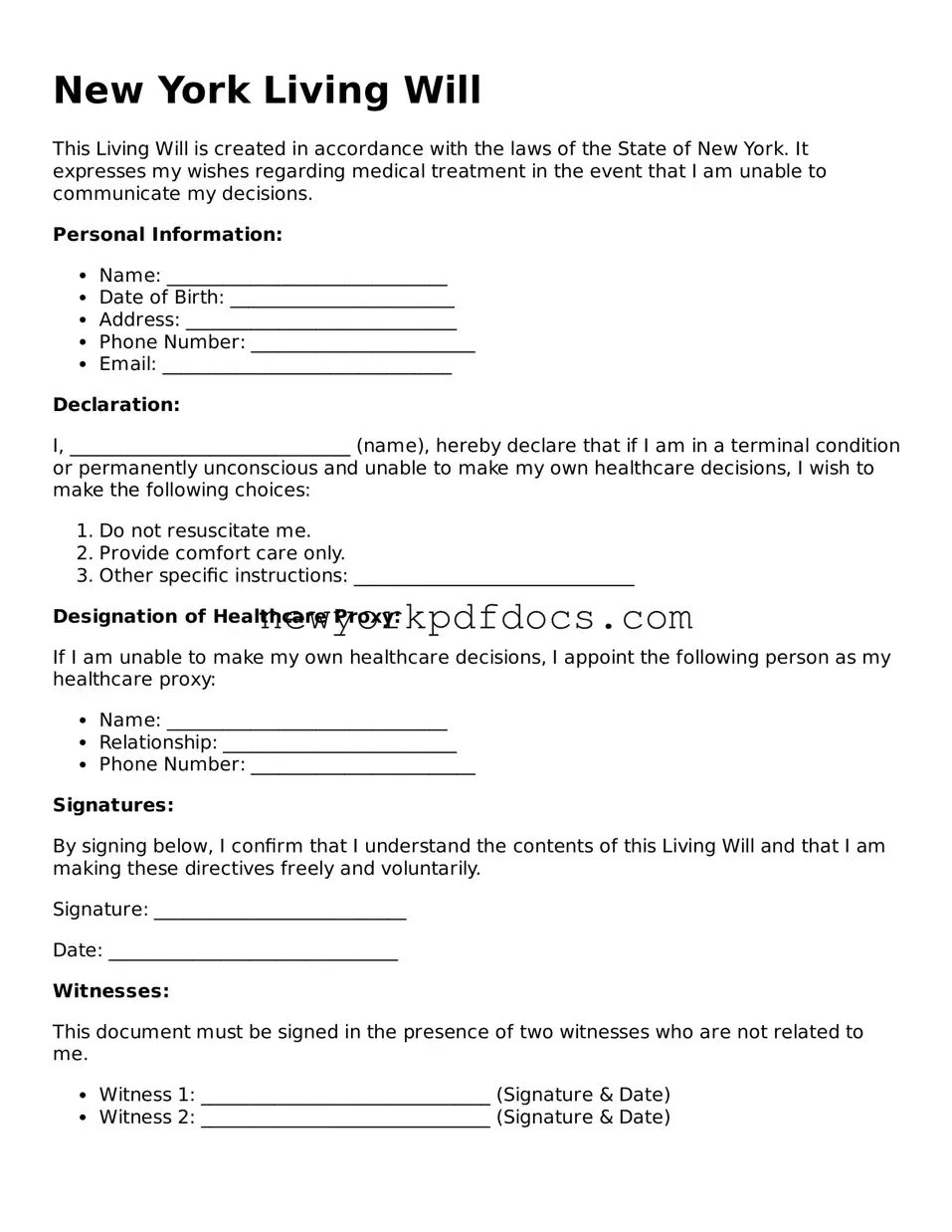New York Living Will
This Living Will is created in accordance with the laws of the State of New York. It expresses my wishes regarding medical treatment in the event that I am unable to communicate my decisions.
Personal Information:
- Name: ______________________________
- Date of Birth: ________________________
- Address: _____________________________
- Phone Number: ________________________
- Email: _______________________________
Declaration:
I, ______________________________ (name), hereby declare that if I am in a terminal condition or permanently unconscious and unable to make my own healthcare decisions, I wish to make the following choices:
- Do not resuscitate me.
- Provide comfort care only.
- Other specific instructions: ______________________________
Designation of Healthcare Proxy:
If I am unable to make my own healthcare decisions, I appoint the following person as my healthcare proxy:
- Name: ______________________________
- Relationship: _________________________
- Phone Number: ________________________
Signatures:
By signing below, I confirm that I understand the contents of this Living Will and that I am making these directives freely and voluntarily.
Signature: ___________________________
Date: _______________________________
Witnesses:
This document must be signed in the presence of two witnesses who are not related to me.
- Witness 1: _______________________________ (Signature & Date)
- Witness 2: _______________________________ (Signature & Date)
This Living Will reflects my preferences regarding healthcare decisions. I request that it be respected by all concerned parties.
